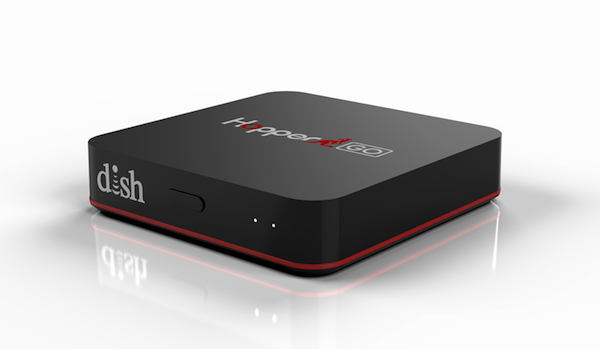5 Things You Can Do with DISH's HopperGo

DISH calls the HopperGO “a revolutionary new personal mobile video drive”, and that’s about as accurate and succinct a description as any—although it still doesn’t really explain what the HopperGO is. The “GO” part of the name is a clue that it’s some sort of mobile device, while “Hopper” hints that it’s related to DISH’s Hopper whole-home satellite DVRs.
Specs-wise, inside the HopperGO’s pocket-size chassis is 64 GB of flash memory. It connects to a Hopper 3 or Hopper 2 using a micro-USB cable; and, once authenticated, can transfer and store up to 100 hours of recorded TV shows and movies from that Hopper.
So far, it sounds like an expensive flash drive—although, to be fair, it’s not like you can use any generic, off-the-shelf flash drive to suck hours and hours of recorded video out of your Hopper. Still, $99 sounds a bit steep for a meager 64 GB. ($99 will get you six 64 GB flash drives that look like miniature R2-D2s.) And, remember, there’s still the question of what the hell you can plug the HopperGO into in order to watch any of the four days’ worth of video stored on it.
The somewhat surprising answer is that you don’t plug the HopperGO into anything—seriously, it’s not even necessary to have a charger adapter or a power outlet within reach. (Well, for about four hours, at least, thanks to the internal, rechargeable battery.) That’s because the HopperGO has the necessary internal guts to create its own private wireless cloud that’ll support up to five simultaneous mobile device connection—with independent content streams for each device running the DISH Anywhere iOS or Android app.
Using the DISH Anywhere app on your phone or tablet is like having a small version of your home TV in your hand. As long as you have a stable, fast internet connection when you’re traveling away from home, you can use the app to stream live TV from one of your Hopper’s built-in tuners, as well as pause and rewind the live TV stream. You can also use the DISH Anywhere app to stream content that’s recorded on your Hopper’s DVR. You can even rent and stream movies from DISH using the app.
Yet another thing you can do with the DISH Anywhere app is use it to transfer recordings from your Hopper to the phone or tablet running the app. Since the app is free and you can do so much with it, why would I want to waste shell out $99 for yet another device I’ll have carry around and potentially lose?
In no particular order, here are a few good reasons to use the HopperGO on your travels:
- Using the HopperGO to store recorded content rather than using the DISH Anywhere app to transfer the content to your iOS or Android device means you’re not using up the memory in your handheld device, which is always in short supply.
- The HooperGO creates its own private Wi-Fi network, so your kids don’t have to have your phone or tablet in their grimy little hands.
- Transferring content from a Hopper to the HopperGO is usually quicker and simpler than using the DISH Anywhere app to transfer the content to your phone/tablet.
- Since the HopperGO has its own battery, you’re not draining the battery in your phone.
- The HooperGO supports up to five independent video streams, so up to five people can watch the content of their choice—instead of incessantly arguing about what to watch in the back seat while you’re driving (or trying to sleep in your hotel room).
Those are some of the first benefits of using the HopperGO that come to mind. After using it for a while longer, I’m sure I’ll discover more. So far, though, it looks like DISH has hit a real home run—or, perhaps it’s better to say, out-of-the-home run—with the new HopperGO.













































